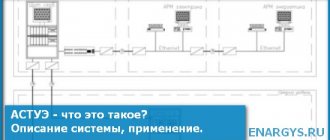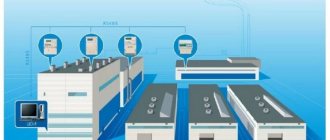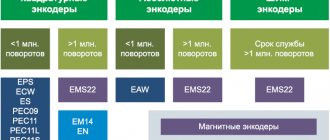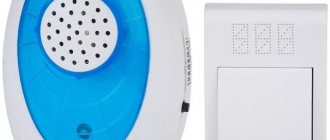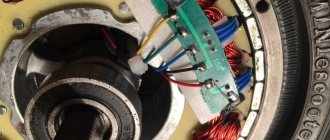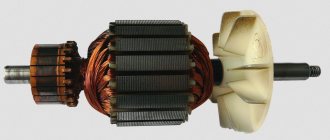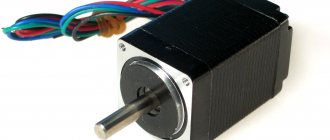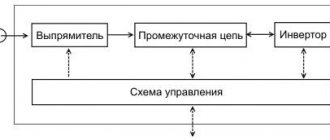Home Blog Electricity metering system ASKUE
Electricity metering system ASKUE
ASKUE is an automated system for commercial metering of energy resources, which is a set of both technical and software tools with the help of which constant accurate metering of consumed electricity is carried out, as well as analysis, storage and transmission of this information.
Energy resources are of great importance in our age, when electricity has deeply penetrated all spheres of human life, and the operation of any enterprise is unthinkable without a constant power supply. In fact, computers, manufacturing machines, lighting, and often even heating and ventilation operate using electricity. Unfortunately, the price of electricity continues to rise. To optimize energy costs and automatically collect consumption data, ASKUE electricity metering systems are used.
The ASKUE program is an automated system for commercial accounting of energy resources. In general, this system is a set of both technical and software tools with the help of which constant accurate metering of consumed electricity is carried out, as well as analysis, storage and transmission of this information.
An important element of ASKUE are IVK or measuring and computing complexes. These devices are installed at points where measurements need to be taken.
Any automated energy accounting system is designed at three main levels:
1. The first level consists of various measuring instruments and sensors. 2. At the second level there are information transmission devices, cables and wires. This level is a link between the previous and the next. 3. At the last level, find equipment that is used to analyze, transform, and store data. These functions are performed by computer technology, as well as specialized software.
Functions of ASKUE
The main functions of ASKUE include:
1. Maintaining a uniform time throughout the entire facility; 2. Receiving and converting measurement information that comes from sensors, as well as linking data to a specific time; 3. Recording all results in the measurement archive; 4. Transformation of measurement data in order to adapt information to other systems; 5. Sending information to other systems, for example, for printing to a printer; 6. Drawing up graphs, charts and tables for a more visual presentation of statistics and information analysis; 7. Possibility of quick access to all data.
Requirements for electricity meters.
2.1. Commercial electricity metering devices operating as part of the ASKUE and being sources of primary information for the ASKUE must meet the following basic requirements and provide:
- accounting for active (in one or two (if necessary) directions) and reactive (in two directions) energy and power;
- the presence of outputs (interfaces) of testing pulses (proportional to the measured values) for each type of measured energy;
- calculation of energy consumption parameters for the current and past days, month, season, year;
- calculation and recording of average power over the past half hour;
- maintaining a load schedule;
- integration period of measured values with intervals of 1, 3, 5, 10, 15, 30, 60 minutes;
- safety of information for at least the last 45 days;
- formation of a database of accounting results with mandatory binding of values to the time of measurements and storing them in non-volatile memory;
- monitoring of exceeding a specified maximum load limit (by active energy);
- availability of protection (password, mechanical locking (seal)) against unauthorized changes in parameters;
- automatic transition to summer/winter time;
- connection of external backup power supply;
- local communication with a computer and/or a portable programmer-reader via an optoport and remote reading of accumulated information using the automated accounting system of JSC "...oblenergo" (preferably via digital data transmission channels RS-232 or RS-485 (RS-422);
- The error in the internal timer is no more than 0.5 seconds. per day and have the ability to externally synchronize the progress of the internal timer;
- maintaining a “log of recording non-standard situations (events)”
- programmable sequence of messages;
- operability at ambient temperatures from -25°C to +55°C;
- service life of at least 20 years;
- the verification interval is at least 6 years.
- display: multi-segment (backlit option);
- the design of the meter must fully comply with the requirements of reliability, simplicity and safety of operation, prevention of unauthorized access;
- 2 independently (simultaneously) working communication systems. interface;
- independent operation of the optical interface and the RS data interface;
- The metering device software must provide:
— programming the meter — reading data, viewing data in operational mode (instant data) — documenting data, the ability to convert information into one of the common formats (*.xls, *.csv, *.txt) — the ability to export/import (transfer, add , updates) databases installed on different computers 2.2.
It is recommended to install metering devices of the following types: ZMD, SL, EA.2.3. At substations owned by JSC "...oblenergo" meters of the ZMD (mainly) or SL type must be installed in order to connect them to the energy company's ASKUE.2.4. Provide software for reading information and parameterizing metering devices, if they are not used in the electrical networks of JSC "...oblenergo"). 2.5. Electric energy metering devices included in the ASKUE must be installed at the boundary of balance sheet responsibility in compliance with the requirements of clause 3.12. PPEE (if there are sub-subscribers, settlement accounting must be organized by the main consumer, ensuring the compilation of an hourly balance in their own networks for commercial settlements). No tags for this post.
Types of ASKUE
The introduction of AKUE electricity metering has a number of advantages. Below are the main ones:
— Optimization of energy costs; — Reduced electricity consumption; — Ability to control and analyze energy consumption, as well as set a limit; — Protection against electricity theft; — The ability to identify shortcomings in the entire electrical system and eliminate them.
The introduction of ASKUE can significantly improve many economic indicators, as well as obtain information about the operation of the enterprise’s electrical system in a visual form and eliminate its shortcomings. In addition, this technology protects against energy theft. SMIS company specialists have extensive experience in creating ASKUE and produce high-quality design and installation of these systems.
Tools and materials
Replacing or installing a new electric meter yourself will require the use of special tools:
- comfortable pliers with rubberized handles;
- a set of non-conductive screwdrivers;
- sharp knife for stripping insulation from wires;
- insulating materials;
- measuring multimeter.
Types of electric meters may differ in their fixation methods, so it is necessary to purchase not only wires with a certain cross-section, insulators and RCDs with circuit breakers, but also fasteners and a current transformer. Installation is carried out in the subscriber panel using mounting strips.
Operating principle of ASKUE
ASKUE is a whole complex of devices, each of which performs its own task. The operating principle of ASKUE boils down to the following:
1. Electronic meters, acting as the main metering devices, send signals. As a rule, data transfer is carried out one time. The frequency of sending data is programmed by the AC. 2. Information from metering devices is accumulated in adders, then they are sent to the server for processing, where they are subsequently archived. If the AS is not loaded, the data can be sent to the server, bypassing the adders. 3. The APK processes the received information and archives it.
The quality of accounting and the performance of the system as a whole depend on the quality and performance of each element of the ASKUE. Therefore, ASKUE components are not something worth saving on. In the future, the introduction of such a system will reduce energy consumption, and, accordingly, such an investment will quickly pay off. ASKUE produced by SMIS Expert is a reliable solution for enterprises and organizations.
Main elements of the system
Installing the system requires four main elements:
- Smart meters with an interface for digital signal output. If during the installation process it turns out that the existing meter is inductive, then a special reading device is used to ensure conversion and further transmission of the signal.
- Mobile or telephone lines or the Internet. Plus special telecommunications equipment: adders, multiplexers, modems, radio modems and similar equipment.
- Computers, and sometimes an additional server. It all depends on the volume and flow of information.
- Software that allows you to receive, process, and, if necessary, transfer data: to subscribers, suppliers, superior and supervisory organizations.
Installation, adjustment, connection and testing of the system are performed by certified organizations. As a rule, they coordinate the project with the energy sales company, and also provide further support for ASKUE in terms of troubleshooting problems and malfunctions.
Advantages of ASKUE compared to conventional accounting
The introduction of ASKUE makes it possible to keep accurate records of energy consumption, which is at the same time beneficial both to consumers who do not want to overpay, and to resource supplying organizations who do not want to lose their profits.
The ASKUE program allows you to accurately account for active and reactive power for a specific period of time. The implementation of such a system allows you to control the operation of each metering device and prevent the theft of electricity. Data received from each electricity meter is displayed on a single monitor. This greatly simplifies the control process. Electricity does not “flow” anywhere. No position remains unaccounted for.
If individual meters allow you to take into account the electricity consumption of a limited number of consumers, then synchronizing them with ASKUE unites all metering devices into a single network. This facilitates data collection and maintenance of all metering devices, regardless of their number and installation location. The data obtained using ASKUE will help to correctly distribute power. For example, an entrepreneur may come to the conclusion that all the most energy-consuming technological processes in production should be switched to the time of day when the most favorable tariffs for electricity consumption apply. Thus, ASKUE not only pays for itself, but also saves the budget of an enterprise or organization.
Equipment for automated commercial electricity metering systems
Data transmission systems, information format converters, data storage devices are special devices. The customer chooses the brand, configuration, and composition of the equipment. Subscriber devices are standard certified metering devices, with the ability to connect to information reading devices.
Without connection to the system, these meters operate as usual.
Moreover, for the operation of ASKUE it is not necessary to use electronic metering devices. There are also mechanical models with the ability to select data.
Workplaces and server equipment are organized on the basis of personal computers. Typically running Windows OS. After installing specialized software, the computer becomes part of the ASKUE.
Electricity meters as part of ASKUE
The automatic accounting system uses the latest generation devices. These are intelligent devices that transform the energy passing through them into measuring impulses. In addition to the fact that they provide accurate readings on electricity consumption. The meters provide information about parameters such as voltage, frequency, current, and phase shift. This is especially important for enterprises where multi-phase accounting is carried out. Unlike induction and electronic devices, such meters have a pulse output or a modem for data transmission.
Such metering devices in remote mode are capable of:
— Transmit signals about the terminal being torn off, the impact of magnets on the counting mechanisms and other interference in their operation. — Receive commands: turn off the relay, change the tariff schedule. — Accumulate and store data on energy consumption. — Electronic meters used as part of ASKUE have different accuracy classes and differ in other parameters, which allows you to select the most optimal metering devices for each specific system.
The modern ASKUE energy accounting software system allows you to maintain technical accounting of energy resources and dispatch the operation of energy facilities. It is used in industrial areas and in the field of housing and communal services (monitoring the operation of electrical networks, thermal communications, water supply, ventilation systems). This is an innovative tool that is very convenient for high-quality and effective monitoring.
Thanks to the automated commercial and technical electricity metering system ASKUE based on SCADA Trace Mode, it is possible to simultaneously dispatch a large number of energy facilities and sources of digital information (meters, measuring instruments), analyzing many parameters for each of them and create databases of any complexity. The system has significant power resources, with a clear and user-friendly interface. It is easy to use, does not require the user to be a programmer, and any engineer can understand it.
ASKUE and AIIS KUE: differences and common features
In addition to ASKUE, the term AIIS KUE is also used in the electrical grid complex. The decoding of the abbreviation contains a minimal difference: an automated information-measuring system for commercial electricity metering.
From a technical point of view, there are practically no differences between these two terms, if you do not take into account the classes of AIIS KUE. They lie on the legal plane:
- The requirements for ASKUE are determined by the “Basic provisions for the functioning of retail electricity markets” (approved by Decree of the Government of the Russian Federation of May 4, 2012 No. 442).
- The requirements for AIIS KUE are determined by Appendix 11.1 to the Regulations on the procedure for obtaining the status of a wholesale market entity and maintaining the register of the wholesale electricity market (approved by Minutes No. 12/2015 of the meeting of the Supervisory Board of the Association “NP Market Council” dated August 21, 2015).
Thus, the concept of ASKUE is applied to retail suppliers and consumers of electricity, while AIIS KUE is applied to its manufacturers and wholesale suppliers, where the presence of an automated information and measuring system is the main condition for entering the wholesale market. The accuracy class for commercial metering meters included in such systems must comply with the requirements of GOST R 8.596-2002 GSI “Metrological support of measuring systems. Basic provisions”, and AIIS KUE themselves are required to be registered with Rosreestr and certified by a regulatory body.
With the adoption of Decree of the Government of the Russian Federation dated May 4, 2012 No. 442, from January 1, 2012, AIIS KUE began to be used to a limited extent in the retail market.
In the context of this article, the differences between ASKUE and AIIS KUE do not seem significant, therefore, further, for convenience of presentation, we will use the general term “ASKUE”.
Functions performed by the ASKUE system:
—
collection from registered objects of data characterizing the occurrence of functional technical processes on them; — processing and analysis of the received operational information based on algorithms specified by the user; — compiling and issuing schematic results; — tracking, timely detection of failures in the operation of monitoring objects, signaling about them and preventing possible emergency situations; — implementation of remote computer dispatch control of objects; — storage of collected data and reporting on it for specified periods; — export of collected archival information to WEB format.
Electricity accounting by ASKUE is carried out on the basis of special software modules that allow you to optimize energy accounting, make it detailed and highly accurate. A large number of visually clear accounting forms display the results of the analysis of collected information in graphical form and in the form of tables; a set of templates is also offered for the generation and execution of final accounting reports.
The system operates on the Windows 32/64 platform and its server versions. In one project, separate servers and individual workstations can be used with restrictions and different levels of rights for users, as well as local networks can be created within organizations.
Technical support for automated commercial electricity metering systems
- Installation of modern electronic electricity metering devices at all group consumption points, with the ability to remotely read parameters in real time (computer or specialized network).
- Development and connection to metering devices of special adder modules with internal memory, which will accumulate data and separate them according to tariff classification. These modules must be provided with autonomous (backup) power.
- Laying wired communication lines between metering devices, data storage devices and information processing centers. Data exchange can be organized using wireless networks or using the Internet. Communication lines must provide for sending reports in real time to the consumer's subscriber device to ensure control over the formation of summary data. Channels are protected from unauthorized connection (encoding). First of all, this is done to protect against hacking and the provision of distorted information.
- Arrangement of information processing centers (IPC), equipped with high-speed computing systems (servers). It is also necessary to provide for the possibility of connecting remote access systems to the COI, so as not to tie operators to a physical workplace.
- Equipping servers and computerized workstations with specialized software. When using remote access, it is necessary to install programs running under mobile operating systems.
- Ideally, the energy sales company should have access to the information. For efficient operation of automation, autonomous equipment is also installed at transformer substations.
Information about the system manufacturer and supplier
The SMIS Expert company develops solutions for electricity metering of ASKUE based on SCADA Trace Mode. In our activities, we use modern technical and computer knowledge, innovative developments and technologies to create functional products that meet consumer needs at a high professional level. We provide services for the supply of equipment for dispatching, its installation and commissioning for turnkey use. We have extensive practical experience in the field of creating high-quality and effective engineering monitoring and telemechanics systems, we are professionals in our field and invite customers interested in our products to profitable cooperation.
Service consumers
All modern electricity metering devices are designed in such a way that at any time they can be part of the metering system (ASKUE) and transportation system (ASKUE).
There are also devices produced a long time ago that are not unified with modern ones. This is not an obstacle to connection, since there is a special optical device that reads the data and sends it to the computer. Moreover, you won’t have to turn off the power. It is clear that modern metering equipment is a computerized element of the circuit.
Such devices occupy a leading position in the design of automated systems. There are also models marked with the letter “D”. Such devices can also be used. Such devices have a controller that has a telemetry input unit that provides data transportation. In this case, a two-wire communication channel is used.
Modern accounting systems are developing at a very fast pace and linking old ones to them is becoming more difficult and expensive. Consequently, it is easier and cheaper to install a device that fits without numerous connections, and use the old equipment somewhere in less important places.
The automated control system for electricity metering appears to be a multi-level, complex scheme with complex operating principles. All its components must be connected to each other, using the latest hardware and software.
Installation and maintenance must be carried out by highly qualified personnel. Then the system will work clearly and flawlessly.
- Mosenergosbyt, operating in the Central region with apartment buildings.
- ZEUS-Energo, serving the Volga region.
- Among energy companies, the Kazakh organization KEGOC should be highlighted.
All of them have powerful networks covering vast territories and have their own developed ASKUE.
You will learn how ASKUE saves energy resources
An automatic system for monitoring and accounting for electricity (ASCAE) is what allows you to make energy consumption economical and targeted. This system analyzes energy costs and helps optimize its consumption. Thus, installing ASKUE at facilities for various purposes is an excellent way to save and correctly distribute energy resources among all consumers.
Electricity is an indispensable power source for equipment and computers. Lighting and ventilation are connected to the electrical system, and electricity is often used for heating. In this regard, the consumption of this resource at some enterprises is simply enormous, so for them, purchasing and installing ASKUE is a real salvation. Thanks to this system, energy costs are reduced, and the purchase and implementation of ASKUE quickly pays for itself.
Why do you need automated accounting?
Automated commercial metering of electricity (power) allows you to determine the values of accounting indicators that can be used in financial calculations.
The purpose of ASKUE is to carry out procedures for collecting and transmitting information, storing information in a specialized database (the database has an increased degree of security against information loss and unauthorized access), processing consumption readings (carrying out calculations of consumed electricity). Based on the data obtained, a report is compiled. With its help, the cost of consumed electricity is calculated and bills are issued to consumers.
Areas of application of ASKUE
Installing ASKUE is advisable at facilities that represent many dispersed electricity consumers united into a single network. Such objects can be considered garage cooperatives, apartment buildings, country and cottage villages. However, most often ASKUE are installed at industrial and transport enterprises, transshipment terminals, airports and water transport ports.
The advantage of a commercial metering system is not only that it processes data received from each electricity consumer. It also allows you to reduce energy costs to an optimal level without disrupting any technological process.
Installing ASKUE at industrial facilities allows you to protect the energy system from energy theft. This opportunity is provided by ASKUE produced by SMIS Expert. Our equipment is not only created with the latest technology and is as reliable as possible, but also has a wide range of functions that are individually configured when designing an ASKUE for a specific facility, taking into account its needs. At the same time, the cost of ASKUE fully corresponds to its high quality, which we invariably support.
ASKUE "SMIS Expert" - choosing a trusted supplier produces equipment for monitoring and accounting for energy consumption, which allows you to achieve the following goals:
— Reduced energy costs. — Reducing the amount of electricity consumed without harming industrial processes. — Setting a limit on electricity costs, thereby controlling consumption. — The ASKUE sensor system allows you to promptly identify shortcomings and failures in the operation of the electrical system and promptly eliminate them. — Continuous collection of data from accounting equipment and sending it to the server. — Detection of unauthorized connections and prevention of electricity theft. — offers to order design and installation, as well as buy ASKUE for your enterprise. Our specialists are always in touch and ready to provide the necessary assistance in selecting the optimal equipment for your facility.
Implementation
Installation of ASKUE systems is carried out according to the following algorithm:
- Creation of a working project, where the structure of the system and its individual levels are developed, a drawing and other related design documentation are drawn up.
- A data transmission system is selected, taking into account the advantages, disadvantages and possibilities of technical implementation.
- Based on the project estimate, the necessary equipment is purchased.
- Installation and configuration (adjustment) of the agro-industrial complex is carried out.
- The staff is selected and, if necessary, trained.
- Putting the system into operation.
Please note that savings on the project will immediately affect functionality. Due to shortcomings, the data may differ from the actual readings of energy meters, as a result, the use of such a complex will not be effective.
